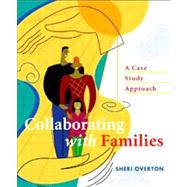The idea for this book must have germinated for years before it suddenly popped up in a moment of insight. As a teacher-educator and parent, I always tried to share my respect for families with the students in my classes. I told stories about the many families I knew and invited numerous parents to speak to my classes. Although students were typically inspired and gained valuable insights, they were not fully aware of the wide range of parents they would meet in their classrooms. I wanted to facilitate my students' understanding and respect for the variety of families with which they would work.
I began to ask family members to write their stories for me. I sought to obtain a good mixture of people from across the country, from different income levels and personal histories, from diverse racial and ethnic groups, who had children with various disabilities at various ages. I drew on a number of individuals I met from living and working in various parts of the country. In addition, I contacted other individuals around the country to ask if they were aware of individuals who would be willing to share their stories. These contacts included teachers and administrators, parent e-mail groups, parent centers, and others whom I knew had some interaction with individuals with disabilities. I particularly wanted to include individuals whom others would not consider active in their children's schools or disability organizations, and I looked for fathers and others whom educators may not know as well. The family members wrote or dictated their stories with minimal direction from me. As time passed, I asked for elaboration or clarification of their stories. While I provided some editing or rearranging to make the cases more useable, I was committed to making minimal changes to preserve the tone of each storyteller's voice. I felt that it was important that the individuals be heard and respected just as they were in reality, rather than polished versions. To check the suitability of the story resulting from my editing, family members read and approved my versions. All names were changed to preserve confidentiality.
The activities, margin notes, and commentaries developed over time to emphasize and clarify points, facilitate reflection, tie theory and research to the story, and occasionally to correct the misinformation presented by parents. Even though parents do not always operate with the most accurate or current information, the publisher and I were committed to publishing accurate information for teacher preparation. All of the cases have been field tested and reviewed multiple times, allowing revision to enhance their use. The result is a set of diverse cases that have been successful in stimulating reflection and discussion and, I hope, more reflective practice. It is my hope that, at the end of your work with this book, you will have developed many resources and ideas for working with families. To that end, each case asks you to determine and discuss the best practices that would support and facilitate collaboration with each family.








